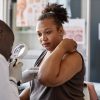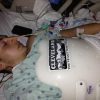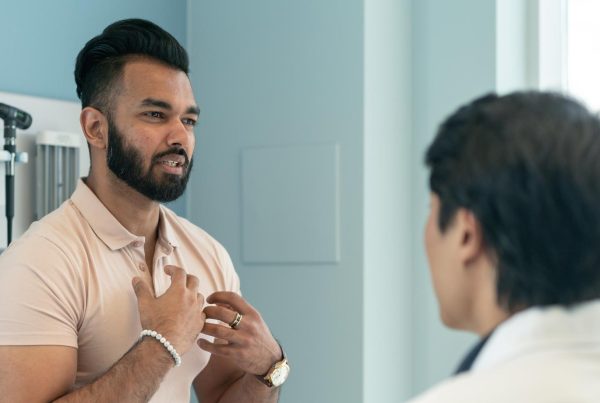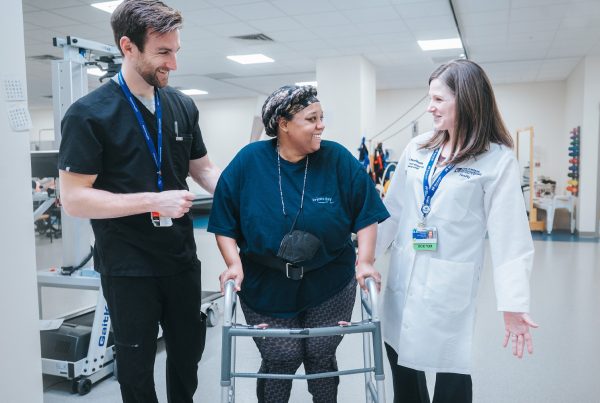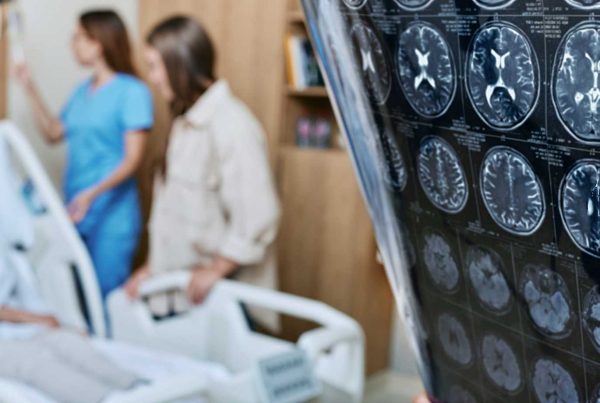During a stroke, one or more areas of the brain can be damaged. Depending upon the area of the brain affected, a person may suddenly lose certain abilities. An acronym to help remember these is “BE FAST.”
Minutes Matter: Knowing the Warning Signs of Having a Stroke
Learn how to prevent strokes and the importance of seeking medical attention as soon as possible.
Did you know that May is National Stroke Awareness Month? MetroHealth is a Comprehensive Stroke Center, providing the highest level of acute stroke care to our patients in the Emergency Department and inpatient setting. This care extends to the outpatient setting, where patients with a variety of stroke types and related conditions are evaluated and treated.
What’s actually happening people experience a stroke?
Stroke is the term health care providers use when a part of the brain dies either from being without enough blood flow for too long (an ischemic stroke) or from bleeding into or around the brain (a hemorrhagic stroke). In the United States, approximately 750,000 strokes happen each year, about 80% of which are ischemic strokes. Stroke is a leading cause of disability and death.
How can you minimize your risk of having a stroke?
You can decrease the risk of having a stroke by focusing on your stroke risk factors. Not all risk factors can be modified (such as age, race, family history or having had a prior stroke or heart attack), which makes those that can be controlled very important.
For example, some risk factors that cannot be modified are if you:
- Are older
- Are Black
- Have a parent or sibling who has had a stroke
- Have had a stroke or heart attack before
On the other hand, some stroke risk factors that can be controlled include:
- High cholesterol
- High blood pressure
- Prediabetes or diabetes
- Obstructive sleep apnea
- Sedentary lifestyle and obesity
- Use of tobacco products
- Cocaine use
While many modifiable risk factors can be improved with lifestyle changes, often a health care provider will prescribe medication to help reach certain target goals. Depending on the type of stroke someone had in the past, a provider may also prescribe a blood thinner. A good way to keep track of your risk factors is to regularly see your primary care provider or neurologist and follow up as recommended.
What signs are there to look for to see if you or someone else is having a stroke?
During a stroke, one or more areas of the brain can be damaged. Depending upon the area of the brain affected, a person may suddenly lose certain abilities. An acronym to help remember these is “BE FAST.”
BE FAST – Symptoms of stroke you should never ignore:
- Balance – loss of balance or falling
- Eyes – painless loss of vision or eyes deviating towards one side or the other
- Face – facial droop. Is one’s smile uneven or lopsided? Is the crease between the nose and lips on one side flattened compared to the other?
- Arm – arm weakness, numbness and/or clumsiness. Does raising both arms with palms up and eyes closed for 10 seconds cause one arm to rotate inwards and/or drift downward compared to the other?
- Speech – sudden slurring or inability to make sense when speaking and/or understand others.
- Time – time to call 911
No matter what type of stroke a person has, early treatment is absolutely important because the amount of disability can often be decreased by getting medical attention as soon as possible. This is because emergency departments can offer important time-sensitive treatments for ischemic strokes such as clot-busting medications given through an IV and/or minimally invasive catheter-based procedures to directly remove blood clots. The sooner one or both of these treatments is given, the less permanent brain damage is likely to occur. Emergency treatment of hemorrhagic strokes includes aggressive blood pressure control, reversing certain blood thinners and consulting with a neurosurgeon for possible emergency procedures.
Stroke Survivors – finding additional support
Have you suffered from a stroke and are you looking for additional support? The MetroHealth Stroke Center is proud to offer our stroke survivors, family, and friends, the opportunity to meet other survivors through our Stroke Survivors Group. We aim to bring stroke survivors together for fun, friendship, and support as you navigate the road to recovery from stroke.
We meet on the fourth Thursday of each month from 1-2 p.m. at the MetroHealth Parma Medical Center in Room A1-350, Conference Room C. Enter through the main door on the medical office side of the building and follow the signs to the meeting room.





